Dialogue at the Edge of Fatigue: Personalized Voice Assistant Strategies in Intelligent Driving Systems
Abstract
1. Introduction
2. Methods
2.1. Experimental Design
2.2. Interview Participants
2.3. Data Collection
2.4. Data Analysis
2.4.1. Coding Process
2.4.2. The SOR Theory Framework
3. Interview Results
3.1. Encoding Results
3.2. Fatigue Driving Triggers
3.3. Personalized Dialogue Needs of Drivers
3.4. The Impact of Dialogue Types on Fatigue Driving Awakening
3.5. Adaptability and Optimization Requirements of Intelligent Voice Assistants
3.6. Dialogue-Awakening Mechanism Based on the SOR Theory
4. Driving Simulation Experiment
4.1. Research Objective
4.2. Driving Simulation Experiment Design
4.2.1. Experimental Protocol
4.2.2. Simulation Experiment Participants
4.2.3. Experimental Instruments
4.2.4. Experimental Indicators
- (1)
- Reaction Time: Reaction time refers to the duration between the appearance of an unexpected risk event and the driver initiating a corresponding response, specifically the time from the onset of the hazard to the moment the driver begins pressing the brake pedal. This metric is used to characterize driver alertness [34].
- (2)
- Arousal: Arousal indicates the participant’s activation state, characterized by high beta activity and low alpha activity consistently observed in the parietal region [35]. The index is calculated as follows: Arousal = α (AF3 + AF4 + F3 + F4)/β (AF3 + AF4 + F3 + F4).
- (3)
- Eyelid closure degree (PERCLOS): PERCLOS refers to the proportion of time within a unit period that the eyes remain closed. This experiment uses the P80 criterion, which defines the eye as closed when the eyelid covers more than 80% of the eyeball area. This measure reflects the driver’s fatigue level and alertness state [36].
4.3. Experimental Results
4.3.1. Reaction Time
4.3.2. Arousal
4.3.3. PERCLOS
5. Discussion
5.1. The Complex Causes of Fatigue and the Role of Psychological Factors
5.2. The Impact of Occupation Type on Dialogue Preferences
5.3. The Role of Interactive Dialogue in Fatigue Recovery
5.4. The Necessity of Adaptive Voice Interaction
5.5. The Role of Voice Stimuli in Enhancing Alertness Under Fatigue
5.6. Suggestions
- (1)
- Incorporate Psychological Factors into Fatigue Detection Models
- (2)
- Implement Personalized Voice Interaction Design Based on Occupational Types
- (3)
- Develop a Dynamic Adaptation Mechanism for Fatigue Dialogue Intervention
- (4)
- Enhance Contextual Awareness and Adaptation to Individual Differences
- (5)
- Shift Fatigue Management from Passive Detection to Active Intervention
5.7. Limitations
6. Conclusions
Author Contributions
Funding
Institutional Review Board Statement
Informed Consent Statement
Data Availability Statement
Conflicts of Interest
References
- Sikander, G.; Anwar, S. Driver fatigue detection systems: A review. IEEE Trans. Intell. Transp. Syst. 2018, 20, 2339–2352. [Google Scholar] [CrossRef]
- Budzyński, A.; Federowicz, M.; Jabłoński, A.; Hasan, W.; Gorszanów, J.; Nikitishyn, T. A machine learning approach for predicting road accidents. Saf. Def. 2024, 10, 60–70. [Google Scholar]
- Rezaee, K.; Khosravi, M.R.; Attar, H.; Almatarneh, S. EEG-based driving fatigue recognition using hybrid deep transfer learning approach. In Proceedings of the 2022 International Engineering Conference on Electrical, Energy, and Artificial Intelligence (EICEEAI), Zarqa, Jordan, 29 November–1 December 2022; pp. 1–6. [Google Scholar]
- Davidović, J.; Pešić, D.; Antić, B.; Božović, M. Comparative analysis of driver fatigue in three companies from different industries. Transp. Res. Procedia 2023, 69, 233–240. [Google Scholar] [CrossRef]
- Manousakis, J.E.; Mann, N.; Jeppe, K.J.; Anderson, C. Awareness of sleepiness: Temporal dynamics of subjective and objective sleepiness. Psychophysiology 2021, 58, e13839. [Google Scholar] [CrossRef]
- Liu, L.; Ji, Y.; Gao, Y.; Ping, Z.; Kuang, L.; Li, T.; Xu, W. A novel fatigue driving state recognition and warning method based on EEG and EOG signals. J. Healthc. Eng. 2021, 2021, 7799793. [Google Scholar] [CrossRef]
- Tian, Y.; Cao, J. Fatigue driving detection based on electrooculography: A review. EURASIP J. Image Video Process. 2021, 2021, 33. [Google Scholar] [CrossRef]
- Ahmad, S.K.; Agarwal, N.; Tanwar, P.; Sundram, S.K. Driver Drowsiness Detection System Using Image Recognition. In Proceedings of the 2024 1st International Conference on Advanced Computing and Emerging Technologies (ACET), Ghaziabad, India, 23–24 August 2024; pp. 1–6. [Google Scholar]
- Peng, Z.; Rong, J.; Wu, Y.; Zhou, C.; Yuan, Y.; Shao, X. Exploring the Different Patterns for Generation Process of Driving Fatigue Based on Individual Driving Behavior Parameters. Transp. Res. Rec. 2021, 2675, 408–421. [Google Scholar] [CrossRef]
- Lin, N.; Zuo, Y. Advancing driver fatigue detection in diverse lighting conditions for assisted driving vehicles with enhanced facial recognition technologies. PLoS ONE 2024, 19, e0304669. [Google Scholar] [CrossRef] [PubMed]
- Pathan, K.H.; Patil, M.M. Survey of cooperative advance driver assistance systems. In Proceedings of the 2016 International Conference on Control, Instrumentation, Communication and Computational Technologies (ICCICCT), Kumaracoil, India, 16–17 December 2016; pp. 32–35. [Google Scholar]
- Beh, H.C.; Hirst, R. Performance on driving-related tasks during music. Ergonomics 1999, 42, 1087–1098. [Google Scholar] [CrossRef]
- Recarte, M.A.; Nunes, L.M. Effects of verbal and spatial-imagery tasks on eye fixations while driving. J. Exp. Psychol. Appl. 2000, 6, 31. [Google Scholar] [CrossRef]
- Mustafa, M.; Rustam, N.; Siran, R. The impact of vehicle fragrance on driving performance: What do we know? Procedia-Soc. Behav. Sci. 2016, 222, 807–815. [Google Scholar] [CrossRef]
- Fruhata, T.; Miyachi, T.; Adachi, T.; Iga, S.; Davaa, T. Doze sleepy driving prevention system (finger massage, high density oxygen spray, grapefruit fragrance) with that involves chewing dried shredded squid. Procedia Comput. Sci. 2013, 22, 790–799. [Google Scholar] [CrossRef]
- Raudenbush, B.; Grayhem, R.; Sears, T.; Wilson, I. Effects of peppermint and cinnamon odor administration on simulated driving alertness, mood and workload. N. Am. J. Psychol. 2009, 11, 245. [Google Scholar]
- Mao, Y.; Wang, X.; He, W.; Pan, G. Improving hazard perception for drivers based on driving styles with visual alerts. Transp. Res. Part F Traffic Psychol. Behav. 2023, 97, 367–382. [Google Scholar] [CrossRef]
- Parthasarthy, A.R.; Mehrotra, S.; Fitzpatrick, C.; Roberts, S.; Christofa, E.; Knodler Jr, M. Driver behavior and performances on in-vehicle display based speed compliance. Accid. Anal. Prev. 2021, 162, 106390. [Google Scholar] [CrossRef]
- Pilkington-Cheney, F.; Afghari, A.P.; Filtness, A.; Papadimitriou, E.; Lourenço, A.; Brijs, T. The i-DREAMS intervention strategies to reduce driver fatigue and sleepiness for different transport modes. In Proceedings of the 2021 7th International Conference on Models and Technologies for Intelligent Transportation Systems (MT-ITS), Heraklion, Greece, 16–17 June 2021; pp. 1–6. [Google Scholar]
- Burggräf, P.; Beyer, M.; Ganser, J.-P.; Adlon, T.; Müller, K.; Riess, C.; Zollner, K.; Saßmannshausen, T.; Kammerer, V. Preferences for Single-Turn vs. Multiturn Voice Dialogs in Automotive Use Cases—Results of an Interactive User Survey in Germany. IEEE Access 2022, 10, 55020–55033. [Google Scholar] [CrossRef]
- Huang, J.; Wang, H.; Ding, S.; Wang, S. DuIVA: An intelligent voice assistant for hands-free and eyes-free voice interaction with the Baidu Maps App. In Proceedings of the 28th ACM SIGKDD Conference on Knowledge Discovery and Data Mining, Washington, DC, USA, 14–18 August 2022; pp. 3040–3050. [Google Scholar]
- Yang, Y.; Zhang, Y.; Zhong, Z.; Dai, W.; Chen, Y.; Chen, M. Intelligent in-car emotion regulation interaction system based on speech emotion recognition. In Proceedings of the 2024 4th International Conference on Computer, Control and Robotics (ICCCR), Shanghai, China, 19–21 April 2024; pp. 142–150. [Google Scholar]
- Braun, M.; Schubert, J.; Pfleging, B.; Alt, F. Improving driver emotions with affective strategies. Multimodal Technol. Interact. 2019, 3, 21. [Google Scholar] [CrossRef]
- Zhang, W.; Chen, J. Future automobile driving space voice interaction: Adapt to the driving scenarios and user personalities. In Ergonomics in Design; AHFE International: Orlando, FL, USA, 2023; Volume 77. [Google Scholar] [CrossRef]
- Corbin, J.M.; Strauss, A. Grounded theory research: Procedures, canons, and evaluative criteria. Qual. Sociol. 1990, 13, 3–21. [Google Scholar] [CrossRef]
- Chu, P.; Yu, Y.; Yang, J.; Huang, C. Understanding the mechanism behind young drivers’ distracted driving behaviour based on SOR theory. J. Transp. Saf. Secur. 2022, 14, 1655–1673. [Google Scholar]
- Robinson, O.C. Sampling in interview-based qualitative research: A theoretical and practical guide. Qual. Res. Psychol. 2014, 11, 25–41. [Google Scholar] [CrossRef]
- Francis, J.J.; Johnston, M.; Robertson, C.; Glidewell, L.; Entwistle, V.; Eccles, M.P.; Grimshaw, J.M. What is an adequate sample size? Operationalising data saturation for theory-based interview studies. Psychol. Health 2010, 25, 1229–1245. [Google Scholar] [CrossRef] [PubMed]
- Charmaz, K.; Belgrave, L. Qualitative interviewing and grounded theory analysis. SAGE Handb. Interview Res. Complex. Craft 2012, 2, 347–365. [Google Scholar]
- Sumardi, R.S.; Mahomed, A.S.B.; Aziz, Y.A. Bibliometric Analysis of Stimulus-Organism-Response Theory: Past Developments, Current Applications, and Future Trends. Int. J. Acad. Res. Bus. Soc. Sci. 2025, 15, 555–569. [Google Scholar] [CrossRef] [PubMed]
- Åkerstedt, T.; Gillberg, M. Subjective and objective sleepiness in the active individual. Int. J. Neurosci. 1990, 52, 29–37. [Google Scholar] [CrossRef]
- Ingre, M.; Åkerstedt, T.; Peters, B.; Anund, A.; Kecklund, G. Subjective sleepiness, simulated driving performance and blink duration: Examining individual differences. J. Sleep Res. 2006, 15, 47–53. [Google Scholar] [CrossRef]
- Gillberg, M.; Kecklund, G.; Åkerstedt, T. Sleepiness and performance of professional drivers in a truck simulator—Comparisons between day and night driving. J. Sleep Res. 1996, 5, 12–15. [Google Scholar] [CrossRef]
- Laurell, H.; Lisper, H.-O. A Validation of Subsidiary Reaction Time Against Detection of Roadside Obstacles during Prolonged Driving. Ergonomics 1978, 21, 81–88. [Google Scholar] [CrossRef]
- Blaiech, H.; Neji, M.; Wali, A.; Alimi, A.M. Emotion recognition by analysis of EEG signals. In Proceedings of the 13th International Conference on Hybrid Intelligent Systems (HIS 2013), Gammarth, Tunisia, 4–6 December 2013; pp. 312–318. [Google Scholar]
- Sommer, D.; Golz, M. Evaluation of PERCLOS based current fatigue monitoring technologies. In Proceedings of the 2010 Annual International Conference of the IEEE Engineering in Medicine and Biology, Buenos Aires, Argentina, 31 August–4 September 2010; pp. 4456–4459. [Google Scholar]
- Soares, S.; Monteiro, T.; Lobo, A.; Couto, A.; Cunha, L.; Ferreira, S. Analyzing driver drowsiness: From causes to effects. Sustainability 2020, 12, 1971. [Google Scholar] [CrossRef]
- Kamran, M.A.; Mannan, M.M.N.; Jeong, M.Y. Drowsiness, fatigue and poor sleep’s causes and detection: A comprehensive study. IEEE Access 2019, 7, 167172–167186. [Google Scholar] [CrossRef]
- Soares, S.; Ferreira, S.; Couto, A. Driving simulator experiments to study drowsiness: A systematic review. Traffic Inj. Prev. 2020, 21, 29–37. [Google Scholar] [CrossRef]
- Lal, S. Behavioural road safety management. In Proceedings of the Road Safety Research, Policing and Education Conference, Perth, WA, Australia, 14–16 November 2004. [Google Scholar]
- Brown, I.D. Driver fatigue. Hum. Factors 1994, 36, 298–314. [Google Scholar] [CrossRef] [PubMed]
- Zhao, C.; Zhao, M.; Liu, J.; Zheng, C. Electroencephalogram and electrocardiograph assessment of mental fatigue in a driving simulator. Accid. Anal. Prev. 2012, 45, 83–90. [Google Scholar] [CrossRef]
- Magaña, V.C.; Scherz, W.D.; Seepold, R.; Madrid, N.M.; Pañeda, X.G.; Garcia, R. The effects of the driver’s mental state and passenger compartment conditions on driving performance and driving stress. Sensors 2020, 20, 5274. [Google Scholar] [CrossRef]
- Sekkay, F.; Imbeau, D.; Dubé, P.-A.; Chinniah, Y.; de Marcellis-Warin, N.; Beauregard, N.; Trépanier, M. Assessment of physical work demands of long-distance industrial gas delivery truck drivers. Appl. Ergon. 2021, 90, 103224. [Google Scholar] [CrossRef] [PubMed]
- Jaydarifard, S.; Behara, K.; Baker, D.; Paz, A. Driver fatigue in taxi, ride-hailing, and ridesharing services: A systematic review. Transp. Rev. 2024, 44, 572–590. [Google Scholar] [CrossRef]
- Krysiński, D. Between Postmodern Sustainable Transport Policy and Modern Habits of People: A Private Car in Biographical Experiences of Polish Drivers. In Proceedings of the European Transport Conference 2015Association for European Transport (AET), Frankfurt, Germany, 28–30 September 2015. [Google Scholar]
- Hawkins, A.N.; Filtness, A.J. Driver sleepiness on YouTube: A content analysis. Accid. Anal. Prev. 2017, 99, 459–464. [Google Scholar] [CrossRef] [PubMed]
- Nass, C.; Jonsson, I.-M.; Harris, H.; Reaves, B.; Endo, J.; Brave, S.; Takayama, L. Improving automotive safety by pairing driver emotion and car voice emotion. In Proceedings of the CHI’05 Extended Abstracts on Human Factors in Computing Systems, Portland, OR, USA, 2–7 April 2005; pp. 1973–1976. [Google Scholar]
- Nazari, F.; Tabibian, S.; Homayounvala, E. Multimodal user interaction with in-car equipment in real conditions based on touch and speech modes in the Persian language. Multimed. Tools Appl. 2023, 82, 12995–13023. [Google Scholar] [CrossRef]
- Zhang, F.; Roberts, S.C. Factors affecting drivers’ off-road glance behavior while interacting with in-vehicle voice interfaces. Accid. Anal. Prev. 2023, 179, 106883. [Google Scholar] [CrossRef]
- Ma, J.; Ding, Y. The impact of in-vehicle voice interaction system on driving safety. J. Phys. Conf. Ser. 2021, 1802, 042083. [Google Scholar] [CrossRef]
- Zhao, X.; Sun, J.; Wang, M. Measuring sociality in driving interaction. IEEE Trans. Intell. Transp. Syst. 2024, 25, 9224–9237. [Google Scholar] [CrossRef]
- Huang, S.; Zhao, X.; Wei, D.; Song, X.; Sun, Y. Chatbot and Fatigued Driver: Exploring the Use of LLM-Based Voice Assistants for Driving Fatigue. In Proceedings of the Extended Abstracts of the CHI Conference on Human Factors in Computing Systems, Honolulu, HI, USA, 11–16 May 2024; pp. 1–8. [Google Scholar]
- Lal, S.K.; Craig, A. Driver fatigue: Electroencephalography and psychological assessment. Psychophysiology 2002, 39, 313–321. [Google Scholar] [CrossRef] [PubMed]
- Lee, J.; Hirano, T.; Hano, T.; Itoh, M. Conversation during partially automated driving: How attention arousal is effective on maintaining situation awareness. In Proceedings of the 2019 IEEE International Conference on Systems, Man and Cybernetics (SMC), Bari, Italy, 6–9 October 2019; pp. 3718–3723. [Google Scholar]
- Karatas, N.; Yoshikawa, S.; Okada, M. Namida: Sociable driving agents with multiparty conversation. In Proceedings of the Fourth International Conference on Human Agent Interaction, Singapore, 4–7 October 2016; pp. 35–42. [Google Scholar]
- Nakagawa, Y.; Park, K.; Ueda, H.; Ono, H.; Miyake, H. Being watched over by a conversation robot may enhance safety in simulated driving. J. Saf. Res. 2019, 71, 207–218. [Google Scholar] [CrossRef] [PubMed]
- Mahajan, K.; Large, D.R.; Burnett, G.; Velaga, N.R. Exploring the effectiveness of a digital voice assistant to maintain driver alertness in partially automated vehicles. Traffic Inj. Prev. 2021, 22, 378–383. [Google Scholar] [CrossRef]
- Large, D.R.; Burnett, G.; Antrobus, V.; Skrypchuk, L. Driven to discussion: Engaging drivers in conversation with a digital assistant as a countermeasure to passive task-related fatigue. IET Intell. Transp. Syst. 2018, 12, 420–426. [Google Scholar] [CrossRef]
- Chu, A.; Huang, G. The Intersection of Voice Assistants and Autonomous Vehicles: A Scoping Review. Proc. Hum. Factors Ergon. Soc. Annu. Meet. 2024, 68, 1795–1801. [Google Scholar] [CrossRef]
- Liu, S. An Experimental Study of Driver Fatigue: Subjective Driver Fatigue Score, Driving Performance, and Driver Fatigue Countermeasures. Ph.D. Thesis, McMaster University, Hamilton, ON, USA, 2015. [Google Scholar]
- Schleicher, R.; Galley, N.; Briest, S.; Galley, L. Blinks and saccades as indicators of fatigue in sleepiness warnings: Looking tired? Ergonomics 2008, 51, 982–1010. [Google Scholar] [CrossRef]
- Schmidt, E.A.; Schrauf, M.; Simon, M.; Buchner, A.; Kincses, W.E. The short-term effect of verbally assessing drivers’ state on vigilance indices during monotonous daytime driving. Transp. Res. Part F Traffic Psychol. Behav. 2011, 14, 251–260. [Google Scholar] [CrossRef]
- Lal, S.K.; Craig, A. A critical review of the psychophysiology of driver fatigue. Biol. Psychol. 2001, 55, 173–194. [Google Scholar] [CrossRef]
- Saxby, D.J.; Matthews, G.; Warm, J.S.; Hitchcock, E.M.; Neubauer, C. Active and passive fatigue in simulated driving: Discriminating styles of workload regulation and their safety impacts. J. Exp. Psychol. Appl. 2013, 19, 287. [Google Scholar] [CrossRef]
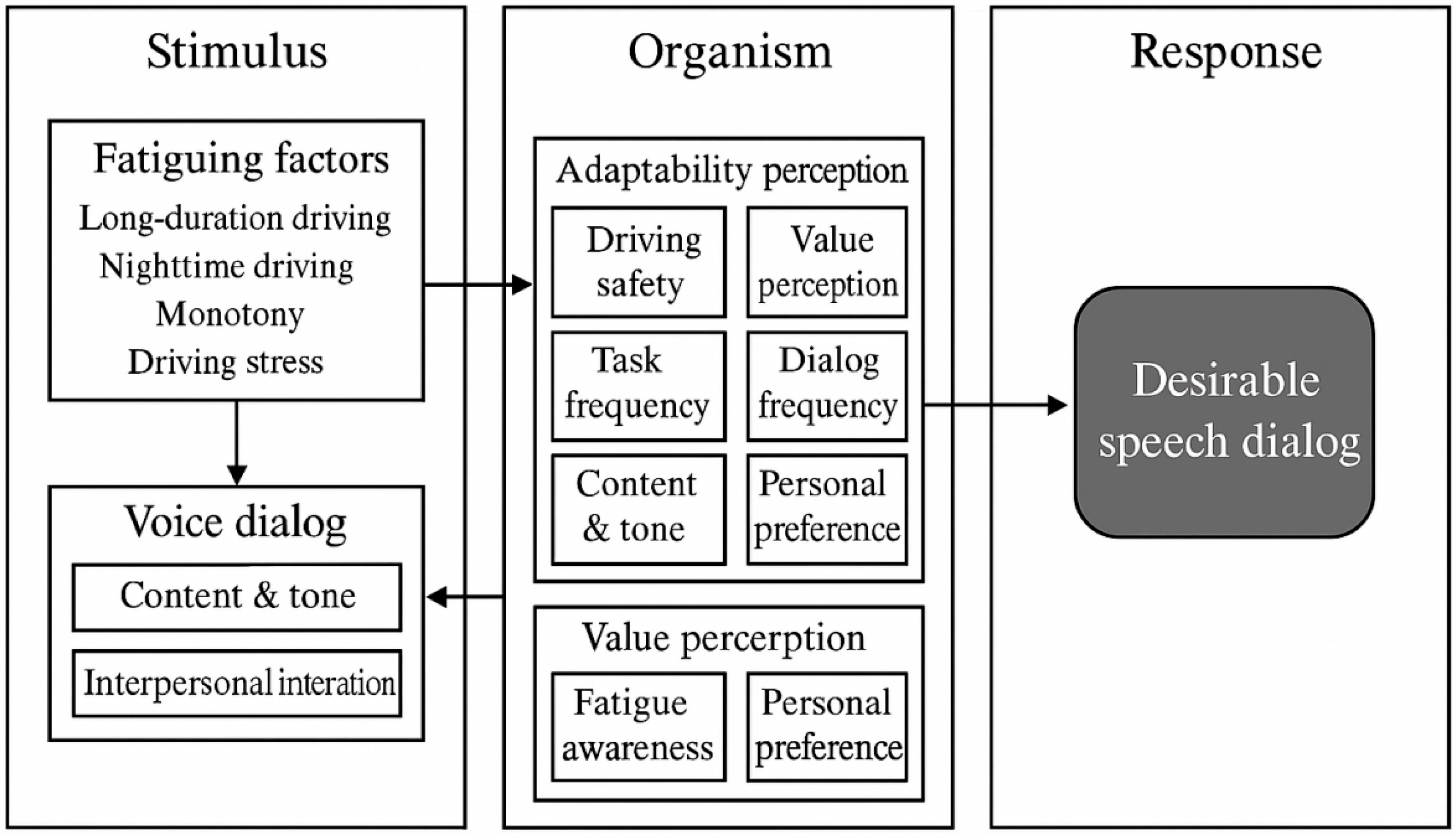
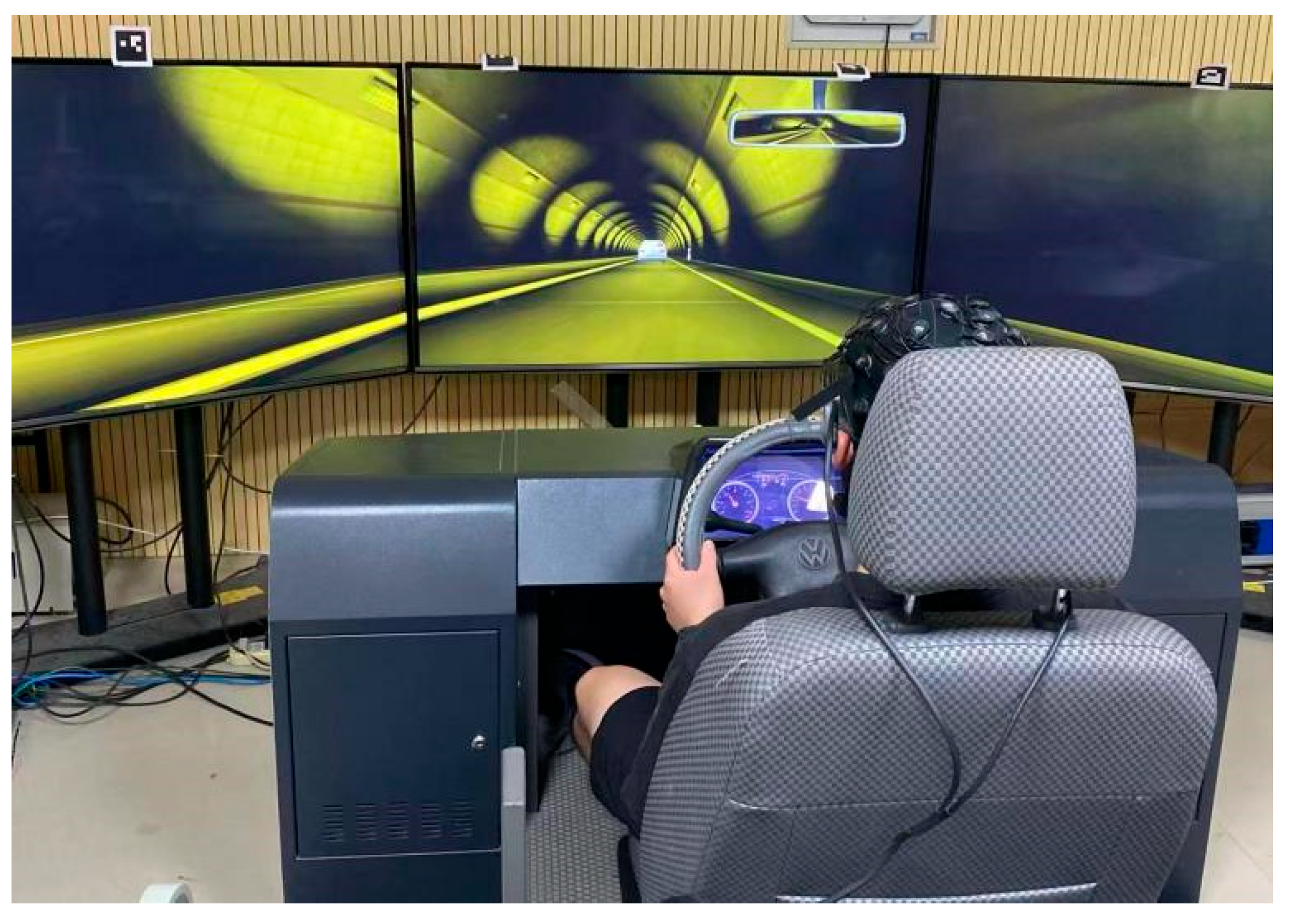
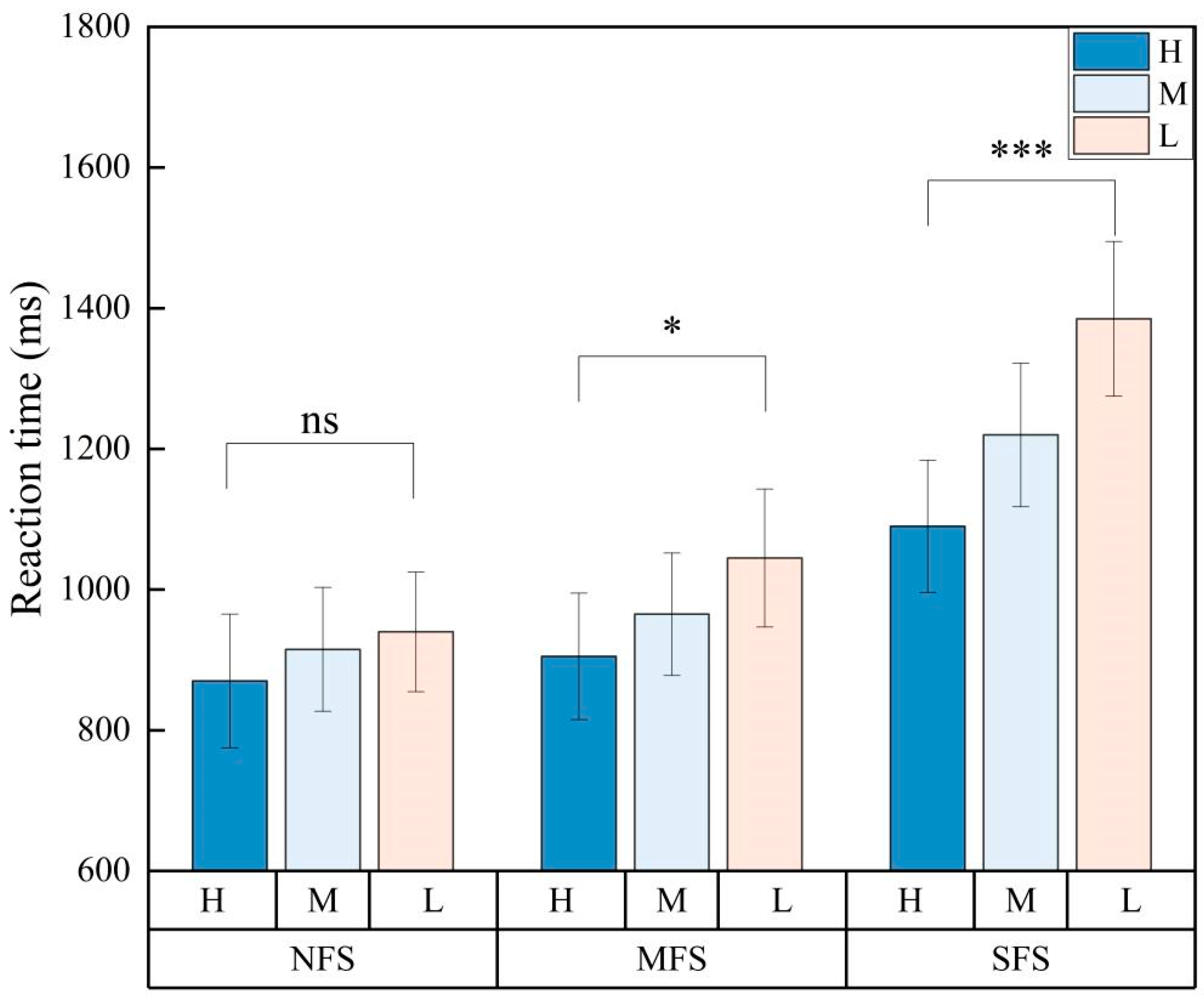
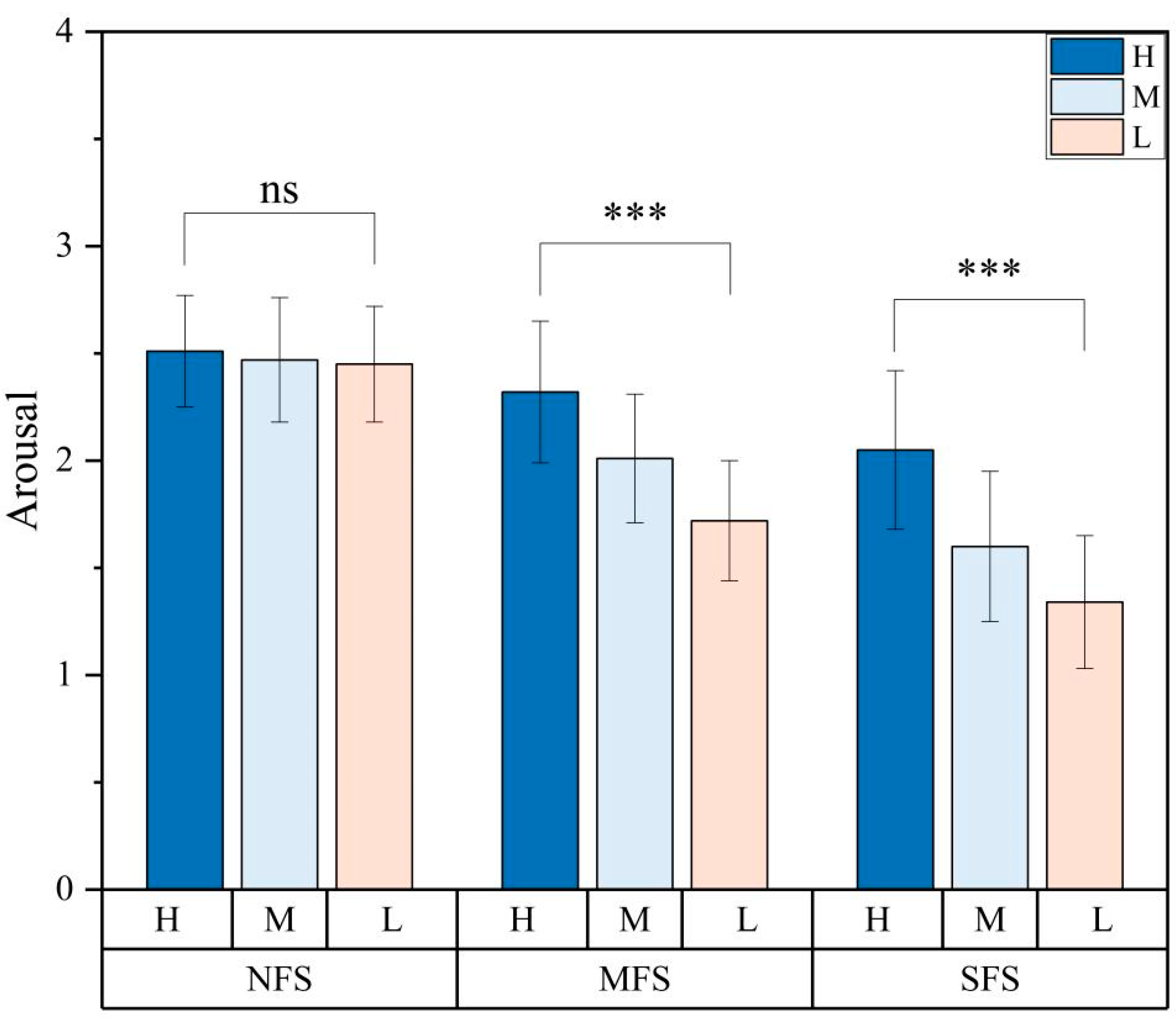
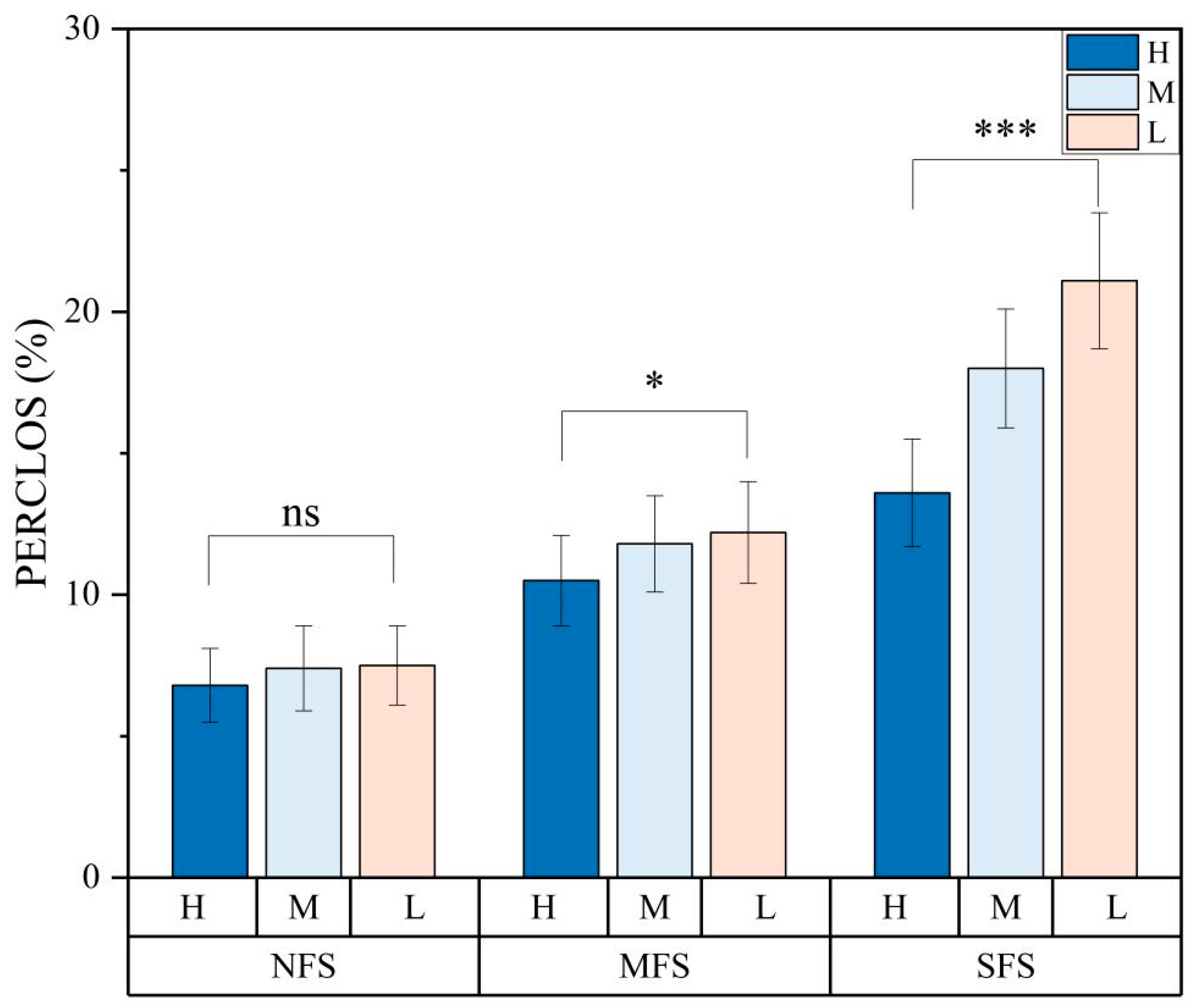
| ID | Occupation Type | Gender | Age | Driving Experience (Years) | Primary Driving Scenarios | Driving Time Characteristics |
|---|---|---|---|---|---|---|
| P01 | Long-haul truck driver | Male | 45 | 15 | Expressways, logistics routes | Frequent night driving, long durations |
| P02 | Long-haul truck driver | Male | 35 | 10 | Expressways, national highways | Long continuous driving time |
| P03 | Long-haul truck driver | Male | 46 | 18 | Inter-provincial trunk transport | High fatigue frequency |
| P04 | Long-haul truck driver | Male | 58 | 25 | Expressways | Frequent night driving |
| P05 | Long-haul truck driver | Male | 38 | 9 | Expressways, county-level logistics | Irregular driving hours |
| P06 | Long-haul truck driver | Male | 49 | 20 | Expressways, mountain roads | High driving intensity |
| P07 | Long-haul truck driver | Male | 59 | 30 | Long-distance national highways | Single driving sessions over 8 h |
| P08 | Long-haul truck driver | Male | 44 | 16 | Expressways, urban outskirts | Frequently fatigued during night driving |
| P09 | Long-haul truck driver | Male | 36 | 12 | Expressways, container transport | Frequent night operations |
| P10 | Taxi driver | Male | 48 | 20 | Urban roads | Drives during both peak daytime and night hours |
| P11 | Taxi driver | Male | 37 | 12 | Urban and suburban areas | Frequent passenger interaction |
| P12 | Taxi driver | Male | 55 | 28 | Main urban roads | Moderate driving intensity |
| P13 | Ride-hailing driver | Male | 34 | 8 | Urban expressways, residential areas | Flexible driving hours |
| P14 | Ride-hailing driver | Female | 33 | 7 | Urban roads | Prefers daytime operations |
| P15 | Ride-hailing driver | Male | 45 | 15 | Urban roads and nearby towns | Prone to nighttime fatigue |
| P16 | Taxi driver | Male | 58 | 22 | Urban roads | Long working hours |
| P17 | Ride-hailing driver | Female | 38 | 10 | City and suburbs | Prefers chatting with passengers |
| P18 | Private car owner | Male | 26 | 5 | Urban commuting, short-distance travel | Occasional night driving |
| P19 | Private car owner | Female | 35 | 8 | Commuting | Mostly daytime driving |
| P20 | Private car owner | Female | 46 | 15 | Urban and nearby cities and counties | Mainly for family use |
| P21 | Private car owner | Male | 28 | 3 | Urban roads | Prefers listening to music while driving |
| P22 | Private car owner | Female | 36 | 10 | Commuting and family outings | Occasional self-driving trips |
| P23 | Private car owner | Male | 48 | 18 | Expressways, national highways, road trips | Extensive long-distance driving experience |
| P24 | Private car owner | Female | 27 | 4 | Urban and short-distance travel | Frequently uses voice assistant |
| P25 | Private car owner | Male | 34 | 6 | Urban driving and holiday travel | Strong preference for emotion-regulating voice interaction |
| Interview Topics | Outline Content |
|---|---|
| Conversation Habits | Do you use in-car voice assistants? In which situations do you use them the most? |
| Are you inclined to initiate conversations with the voice assistant? | |
| Do you have any preferences regarding the voice assistant’s tone and pitch? | |
| Do you think the voice assistant is helpful for driving? In what ways? | |
| Conversation Needs | When you are fatigued while driving, what kind of help would you like the voice assistant to provide? |
| Do you need more reminders, companionship, entertainment, or navigation functions? | |
| What are your expectations for the voice assistant in terms of alleviating fatigue? | |
| Would you like the voice assistant to be able to detect your fatigue state? | |
| Conversation Wake-up Effect | Have you ever been awakened by the voice assistant when driving fatigued? What was your reaction at the time? |
| What type of voice content do you think is most effective for waking you up? | |
| Between gentle reminders, humorous banter, and strong commands, which do you prefer? | |
| Have you ever ignored the voice assistant? Why? |
| Selective Coding (Core Category) | Axial Coding (Subcategory) | Open Coding (Initial Concepts) |
|---|---|---|
| Fatigue Driving Triggers | Causes of Fatigue Driving | Long hours of driving, night driving, monotonous environment, driving pressure, physical fatigue, mental fatigue |
| Effects of Fatigue | Cognitive fatigue, reduced attention, emotional fluctuations, degraded driving performance | |
| Drivers’ Dialogue Needs | Dialogue Motivation | Active (refreshing, relieving boredom), passive (passenger interaction, work-related needs) |
| Dialogue Targets | Familiar persons (family, friends), strangers (passengers), AI assistant | |
| Drivers’ Dialogue Preferences | Preferences of Long-Haul Truck Drivers | Task-oriented (navigation, traffic info), highly interactive (Q&A) |
| Preferences of Taxi Drivers | Social conversations (chatting with passengers) | |
| Preferences of Private Car Owners | Relaxed entertainment (music, news), family communication | |
| Impact of Dialogue Types | Effective Dialogue Types | Humorous, highly interactive (e.g., Q&A, light chats) |
| Ineffective or Fatigue-Inducing Types | Mechanical, repetitive, serious topics, emotionally neutral dialogues | |
| Adaptability of Voice Assistants | Evaluation of Current Assistants | Rigid interaction, lack of personalization, excessive interruption |
| Ideal Assistant Characteristics | Friendly tone, moderate speech rate, contextual adaptation, personalized recommendations | |
| Optimization of Voice Assistants | Needs by Fatigue Level | Severe fatigue (strong stimuli), mild fatigue (light social interaction), no fatigue (minimal intervention) |
| Intervention Frequency | Over-intervention, moderate reminders, demand-based adjustment |
| Fatigue Level\Voice Type | High-Intensity (H) | Moderate-Intensity (M) | Low-Intensity (L) |
|---|---|---|---|
| Non-fatigued state (NFS) | Fast speech rate, high pitch, proactive guidance, with emotional tone, such as ‘Hey, don’t zone out! Let’s guess a riddle to relax!’ | Gentle tone, friendly meaning, with a social nature, such as ‘How are you? I can tell you a light joke’ | Only necessary driving prompts, no proactive interaction, such as ‘Speed limit ahead 60 km/h, please control your speed’. |
| Mild fatigue state (MFS) | |||
| Severe fatigue state (SFS) |
Disclaimer/Publisher’s Note: The statements, opinions and data contained in all publications are solely those of the individual author(s) and contributor(s) and not of MDPI and/or the editor(s). MDPI and/or the editor(s) disclaim responsibility for any injury to people or property resulting from any ideas, methods, instructions or products referred to in the content. |
© 2025 by the authors. Licensee MDPI, Basel, Switzerland. This article is an open access article distributed under the terms and conditions of the Creative Commons Attribution (CC BY) license (https://creativecommons.org/licenses/by/4.0/).
Share and Cite
Zhou, C.; Wang, L.; Yang, Y. Dialogue at the Edge of Fatigue: Personalized Voice Assistant Strategies in Intelligent Driving Systems. Appl. Sci. 2025, 15, 6792. https://doi.org/10.3390/app15126792
Zhou C, Wang L, Yang Y. Dialogue at the Edge of Fatigue: Personalized Voice Assistant Strategies in Intelligent Driving Systems. Applied Sciences. 2025; 15(12):6792. https://doi.org/10.3390/app15126792
Chicago/Turabian StyleZhou, Chenyi, Linwei Wang, and Yanqun Yang. 2025. "Dialogue at the Edge of Fatigue: Personalized Voice Assistant Strategies in Intelligent Driving Systems" Applied Sciences 15, no. 12: 6792. https://doi.org/10.3390/app15126792
APA StyleZhou, C., Wang, L., & Yang, Y. (2025). Dialogue at the Edge of Fatigue: Personalized Voice Assistant Strategies in Intelligent Driving Systems. Applied Sciences, 15(12), 6792. https://doi.org/10.3390/app15126792






